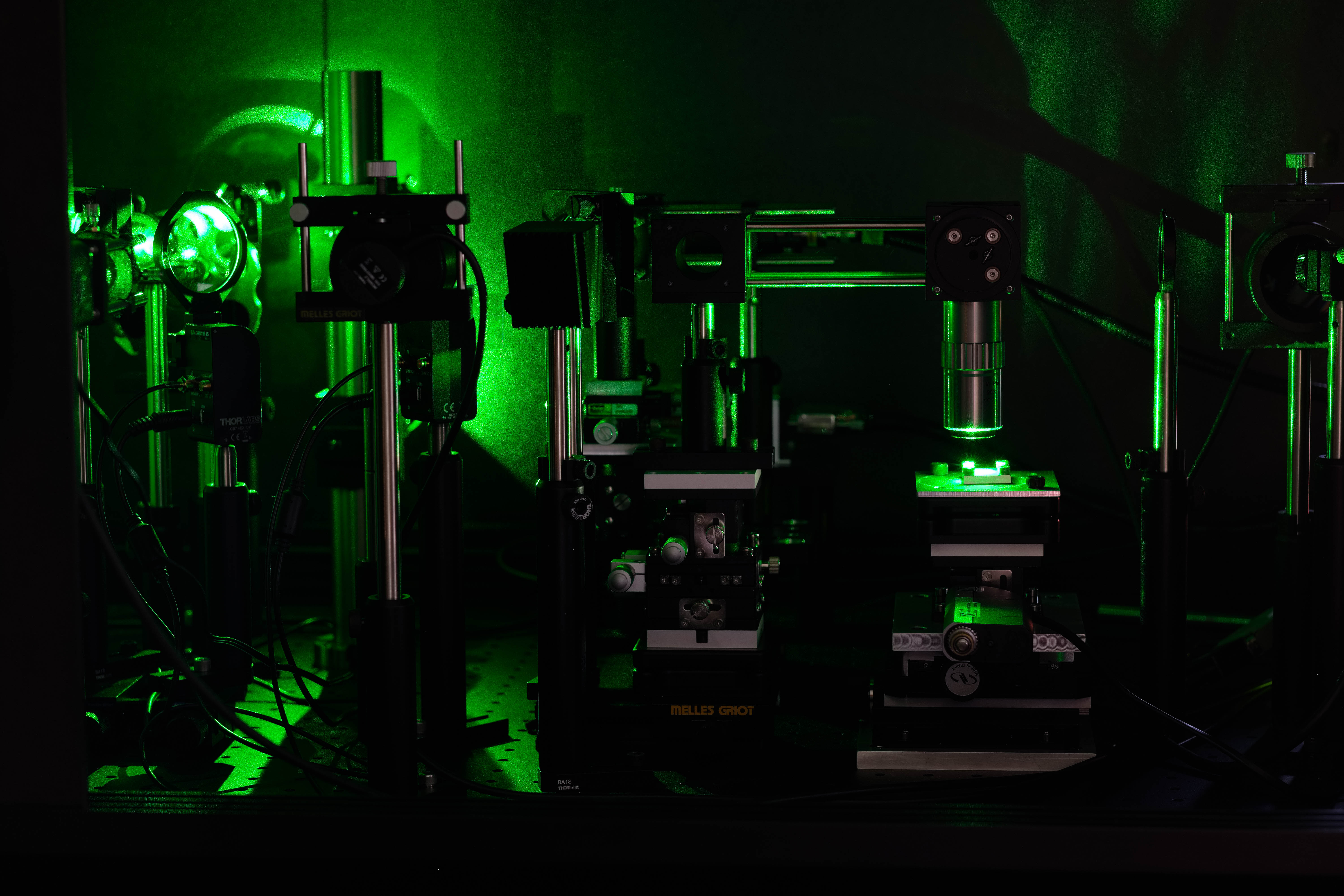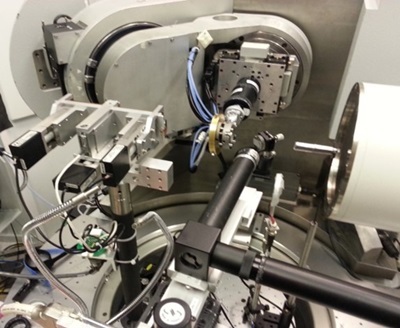Facilities
Lab Safety and Security:
All personnel, including students, using high-pressure research facilities at HIGP and Argonne National Lab
is required to undergo formallized safety training. Our Lab Safety and Security website lists these requirements
and provides access to documents describing safe procedures to operate all of lab interumentation, as well as MSDS
sheets for all chemicals we use.
Go to HIGP high-pressure Lab Safety and Security website

Book X-ray Atlas time
Video tour of the lab and software
D8 Venture brochure
Oxford Cryostream 800+ high/low T device brochure
D8 Advance brochure
TC Dome heating stage brochure
Diffrac.Eva brochure
Diffrac.TOPAS brochure
Table of Contents:
HIG 105 Sample Preparation Lab
HIG 105 Raman Spectroscopy Lab
HIG 154 X-ray Atlas Lab
POST 833 Mineral Physics Computer Lab
APS 13BMC Partmership for eXtreme Xtallography
The Mineral Physics laboratories at HIGP occupy a space of approximately 3500 sq. ft. and house a wide variety of state of the art analytical instrumentation, majority of which has been acquired over the years with generous help from the NSF EAR programs and has been used for conducting advanced research and for student training in high-pressure science. The laboratories are equipped for measurements of physical, chemical, spectroscopic, micro-structural and nano-structural properties of minerals, advanced ceramics and ceramic composites, single-crystalline and poly-crystalline minerals, silicate glasses and melts, and hard thin ceramic films as well as metals and molten alloys. HIGP high pressure labs are not only a truly unique resource for mineral science research and student training within the Hawaiian Islands and central Pacific region, but also one of the largest and most comprehensive academic research facilities in Mineral Physics in the country.
Diamond Anvil Cell Sample Preparation Lab

The HIGP Mineral Physics lab is well equipped for sample preparation in mineral science research. The sample preparation labs have just been renovated. Three modern stereo microscopes with long working distance high magnification objectives and high resolution digital cameras offer capabilities for examining, photographing, and documenting both starting samples, as well as products of HPHT experiments. A high temperature oven is available for sample synthesis or removal of moisture from hygroscopic samples. A laser gasket drilling system and an electric discharge drilling machine (EDM) are also available for drilling sample chambers in gaskets for diamond anvil cell (DAC) experiments. An existing gas loading system is being modified for visual and optical access to the high pressure chamber for more reproducible and reliable gas loading and will be ready for use by our group in the near future.
High Pressue and Temperature Raman Spectroscopy Lab

HIGP spectroscopy lab houses custom Princeton Instruments micro-Raman system based on Acton SP2360 imaging spectrograph, thermoelectric deeply-depleted back-illuminated PIXIS CCD detector and 1000 mW 532nm solid state laser (Fig. F3). The instrument is equipped with a motorized XYZ sample stage and is coupled with a 100 W 1064nm Nd-Yag heating fiber laser. The system is also be used for laser-cutting of diamond anvil cell gaskets.
POST 833 Mineral Physics Computer Lab

Mineral physics research involves extensive usage of computations. Analysis of experimental data is done using either commercial or custom computer codes. We often combine experiments with quantum mechanical simulations or geophysical modeling. POST 833 dedicated Mineral Physics Computer Lab serves these purposes. The lab is equipped with 7 shared access Windows workstations, houses a Network Associated Storage (NAS) server, and offers modern teleconferencing capabilities.
Partnership for eXtreme Xtallography

COMPRES funds a joint project of the University of Hawaii, and GSECARS located at APS experimental station 13BM-C. Recent upgrade of the monochromator and focusing optics in that station allows to extend the experimental capabilities offered at 13BM-C to include powder and single crystal diffraction experiments in diamond anvil cell or on diamond inclusions. Unique design combining Newport 6-circle diffractometer with laser spectroscopy optics, currently under commissioning, enables single crystal X-ray diffraction measurements at combined high pressure and high or low temperature. The PX^2 instrument currently offers 30 keV incident energy beam, focused to 15 x 15 μm size, with supplementary imaging system, which allows accurate sample monitoring and positioning, ideal for the diamond anvil cell work. Several successful commissioning measurements of microcrystal samples in the air, solid inclusions in natural kimberlitic diamonds, as well as crystal inside diamond-anvil cell have already been performed. PX^2 has already started accepting general users for the 2015-2 APS run. The progress of the development of laser heating HPHT capabilities of this instrument will rely on the availability of X-ray Atlas as a prototyping and training instrument in Hawaii.

